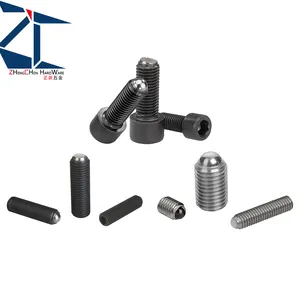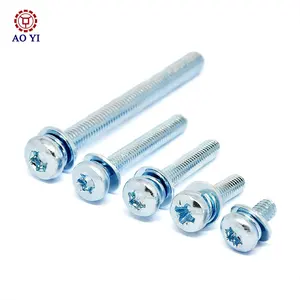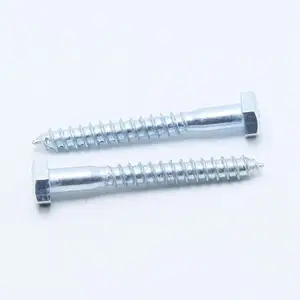Introduction
In the world of DIY projects, the devil is often in the details. One such detail that can make or break your project is the type of fastener you use. Among these, small head screws, such as Trim and Cap Head Wood Screws, play a pivotal role. These screws, with their compact heads, are not only ideal for attaching trim materials like cove molding and chair rails but also for a variety of other applications. This article will delve into the world of small head screws, exploring their types, uses, benefits, and the techniques for handling them safely and effectively.
Understanding Small Head Screws
Small head screws, such as Trim and Cap Head Wood Screws, are similar to standard flat heads but with a smaller head diameter. They are used for attaching trim materials like cove molding and chair rails. The small head size requires careful handling with the driver bit. Head styles can vary by manufacturer and application. For instance, Trim Head screws for wood applications may differ from those for composite materials. Cap-head screws prevent material from rising above the deck, ensuring a clean installation. They are approved fasteners for various composite decking brands.
Types of Small Head Screws
Screw type fasteners come in various head styles, including two basic designs: countersunk and non-countersunk. Non-countersunk heads, where the head is fully exposed, encompass a large variety. This style includes: binding, button, cheese, fillister, flange, hex, pan, round, socket and low socket, square and truss heads. Countersunk designs mainly consist of flat, oval and bugle heads. Flat and oval heads require a countersunk hole unless the material is very soft. Bugle heads are commonly found in drywall screws, forming their own countersunk hole during installation.
Choosing the Right Small Head Screw for Your Project
Choosing the right small head screw for your project involves understanding the screw's parts and their functions. The head of the screw, which receives the clamping force during installation, is crucial for the assembly's integrity. Two main types are countersunk and non-countersunk head screws. Countersunk screws sit flush with the material's surface, making them ideal for woodworking and construction. Non-countersunk screws, on the other hand, protrude from the assembly, offering resistance to damage. Your choice depends on the project's requirements and the desired aesthetic outcome.
The Role of Small Head Screws in DIY Projects
Small head screws play a crucial role in various DIY projects. They are essential for securing furring strips when installing drywall, attaching small decorative shelves to walls, and evenly distributing the weight of kitchen cabinets. They are also used for hanging pictures on concrete walls, installing exterior shutters, and securing downspouts. In bathrooms, small head screws can hold towel bars securely in place. However, for heavier loads, larger and stronger fasteners may be required.
Benefits of Using Small Head Screws
Small head screws, also known as low profile screws, offer several advantages. Firstly, they are ideal for smaller devices and equipment due to their compact heads. This makes them perfect for applications with limited space for bolt mounting. Secondly, they contribute to a neater appearance as they have minimal protrusion after mounting, reducing concerns about interference. Lastly, they contribute to lighter-weight devices and equipment, an essential factor in many modern designs.
Common DIY Projects Using Small Head Screws
Small head screws play a crucial role in various DIY projects. For instance, they secure furring strips during drywall installation, hold small decorative shelves, and distribute weight evenly when installing kitchen cabinets. They're also used for hanging pictures on concrete walls, attaching shutters to exteriors, and installing brackets for downspouts. Lastly, they ensure the secure placement of towel bars in bathrooms. However, for heavier loads, larger fasteners may be required.
Practical Tips and Techniques
When working with small head screws, it's crucial to use the right techniques. Firstly, ensure the driver bit aligns with the screw shank to avoid slippage. Apply pressure and start the drill slowly for better control. Secondly, when driving screws at an angle, create an angled pilot hole for successful insertion. Lastly, replace worn driver bits promptly to maintain efficiency. Also, match the driver bit size to the size of the recess in the screw head for a tight fit.
Working Safely with Small Head Screws
When working with small head screws, safety is paramount. Screwdrivers, the primary tool for handling screws, come in various shapes and sizes, each designed for a specific use. It's crucial to use the correct screwdriver for the job to prevent accidents and ensure efficient work. For more safety tips, you can refer to general hand tool operation guides. Remember, the right tool and safety practices can make a significant difference in your DIY projects.
Tools Needed for Handling Small Head Screws
When working with small head screws, the right tools are essential. Depending on the type of screw, you may need a Flathead, Phillips, Pozidriv, Robertson, Torx, Hexagon, or Spanner driver. For more specialized tasks, a Frearson, Japanese Industrial Standard, or Jewelers’ screwdriver might be necessary. Computer and Precision screwdrivers are perfect for delicate work, while Tri-Angle, Tri-Wing, and Clutch Head drivers handle unique screw types. Styles of screwdrivers, such as Manual, Electric, Impact, Insulated, Right Angle, Cordless, Magnetic, Bolster, Ratcheting, and Spiral Ratchet, offer versatility for various projects.
Step-by-Step Guide to Using Small Head Screws
Trim head screws, a type of small head screws, are best used in applications where a finish nail would be suitable. They are typically sunk beneath the surface and finished over with a filler. For softwoods, they can power through the trim, drywall, and into the stud. Hardwoods usually require pre-drilling to prevent splitting. A specially designed heat treated 1/4 in. countersink with 1/8 in. pilot works well for all trim head screws. However, caution is needed as their small head and recess do not allow for much error, and high torque situations can break the head.
Conclusion
In conclusion, small head screws are an essential component in a wide range of DIY projects. Their compact size, versatility, and aesthetic appeal make them a preferred choice for many applications, from securing furring strips to installing kitchen cabinets. However, their effective use requires a thorough understanding of their types, the right choice based on the project's requirements, and the correct handling techniques. Safety, too, is paramount when working with these screws. With the right tools and techniques, small head screws can truly revolutionize your DIY projects, offering a blend of functionality and aesthetics.











































 浙公网安备 33010002000092号
浙公网安备 33010002000092号 浙B2-20120091-4
浙B2-20120091-4